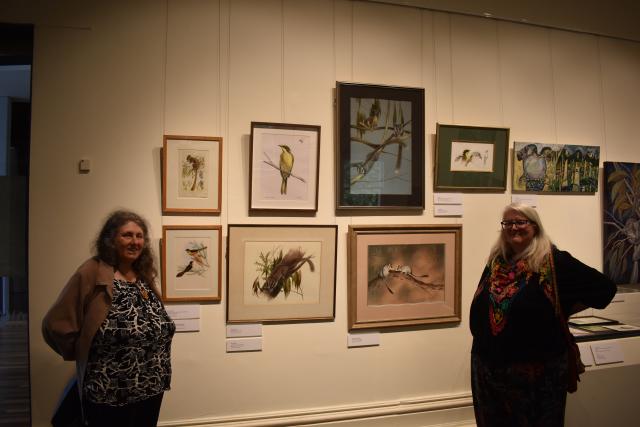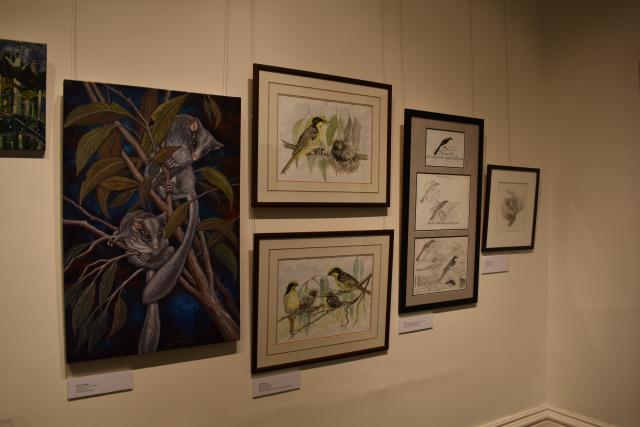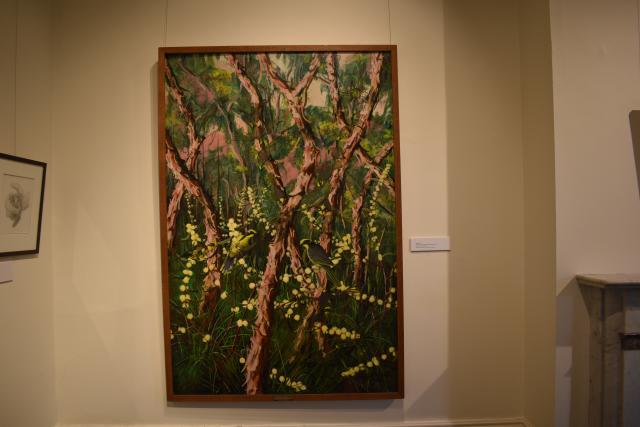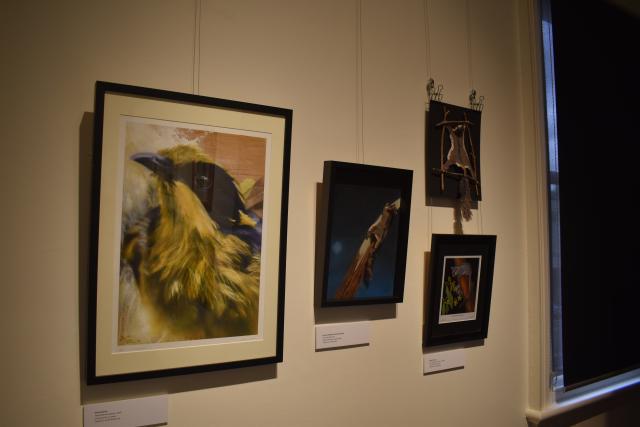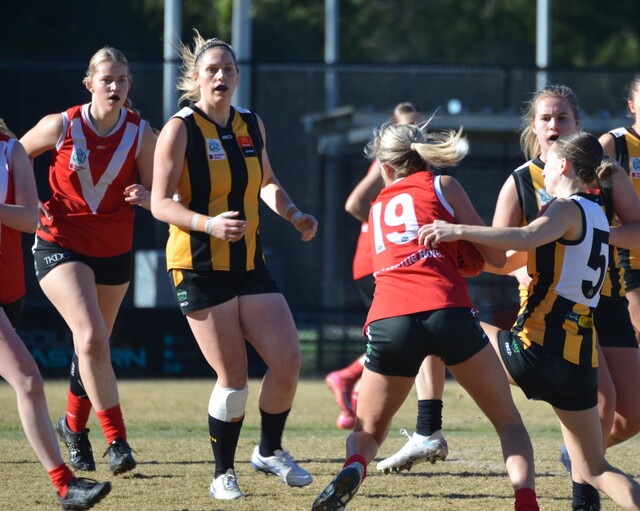Two iconic Yarra Ranges animals are being featured in an exhibit at the Yarra Ranges Regional Museum until the end of March.
‘Plight of our faunal emblems’ can be found upstairs, with an array of artworks depicting the Helmeted Honeyeater and Leadbeater’s Possum on show.
Nursery Assistant at Friends of the Helmeted Honeyeater Marita Hanigan said the exhibition was originally planned for 2021 to celebrate 50 years of the animal’s faunal emblem status.
“We got together a group of works that celebrated both the possum and the bird, along with works that showed what the volunteers had been doing to help both these protected species. We segued it into an online event, but with restrictions lifted, thought we could reprise it,” she said.
“In particular, it’s about increasing visibility of these animals where they occur too because both of the faunal emblems occur only occur naturally in the Shire of Yarra Ranges, so locally they’re really significant.”
The pieces are garnered from the collections of members of the Friends of the Helmeted Honeyeater and Leadbeater’s Possum groups like Sue Bendel as well as being loaned from artists themselves like Peter Voice, who has two pieces that he painted live at the Royal Melbourne Show in 1996 on display.
Ms Hanigan said the Yarra Ranges is crucial to the future of both creatures.
“If it wasn’t for the volunteers, the government departments, the zoos and all the people that get involved in trying to protect these animals, grow their numbers and protect their habitat, they wouldn’t be here.,” she said.
“These animals would have been extinct a number of years ago if it wasn’t for that, and most of the people who are volunteers come from this very region, so they’re important for the animals in the area.”
The exhibition is on until Sunday 28 March, with free entry to the museum.
Ms Bendel said one piece owned by a man named Eric Wilkinson is also a crucial piece of the history of the animal’s discovery.
“It was done by his niece, but the significance there is that if it wasn’t for Eric Wilkinson going for a drive through the Central Highlands and stopping at Tommy’s Bend on 3 April 1961, we would not have known these animals were still in existence,” she said.
“The year before they were considered extinct.”

